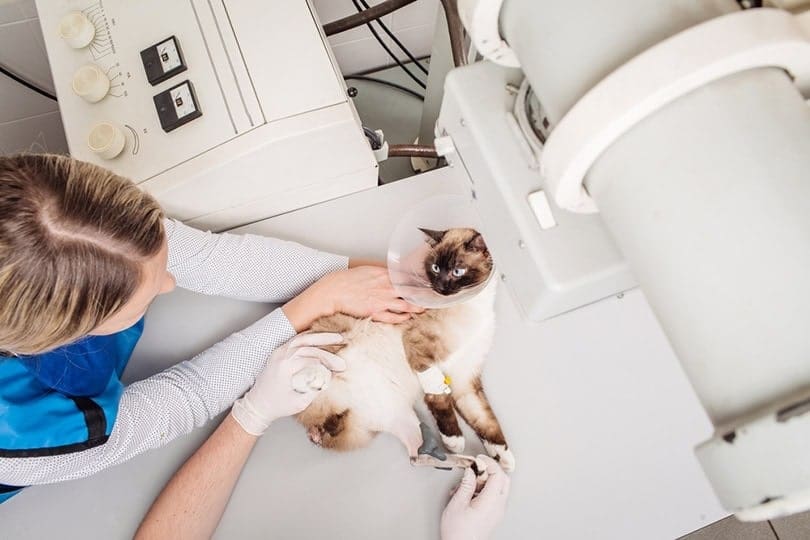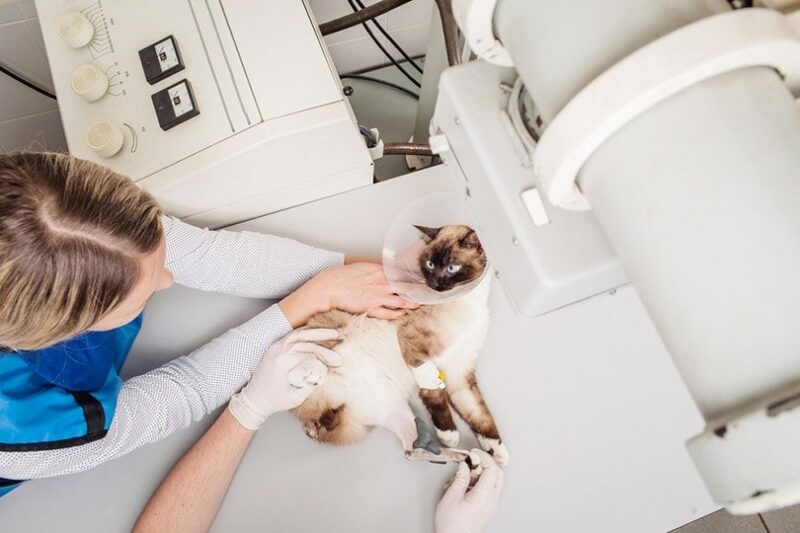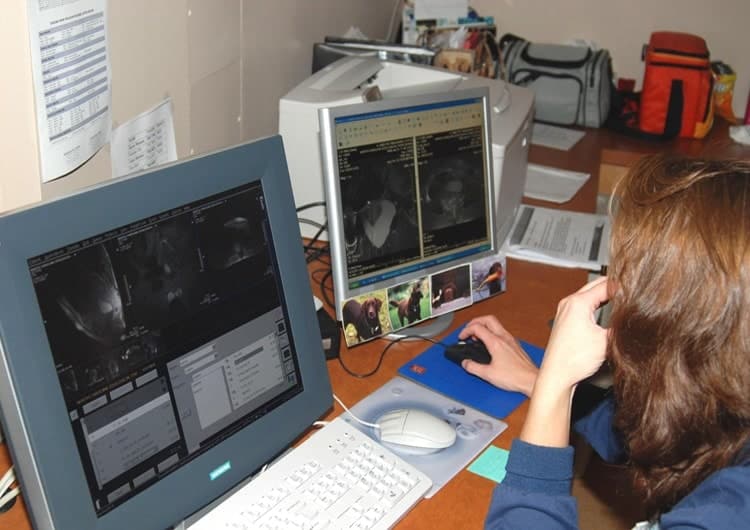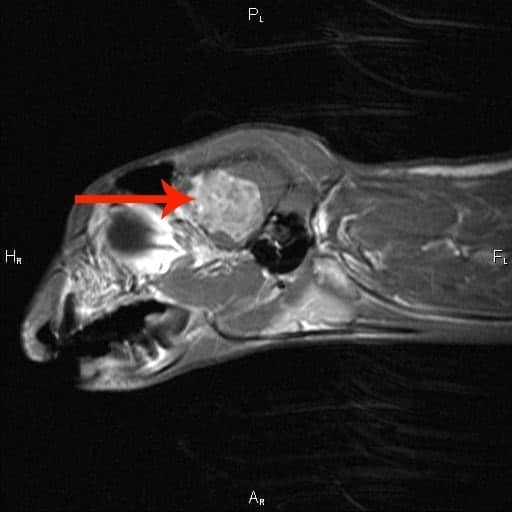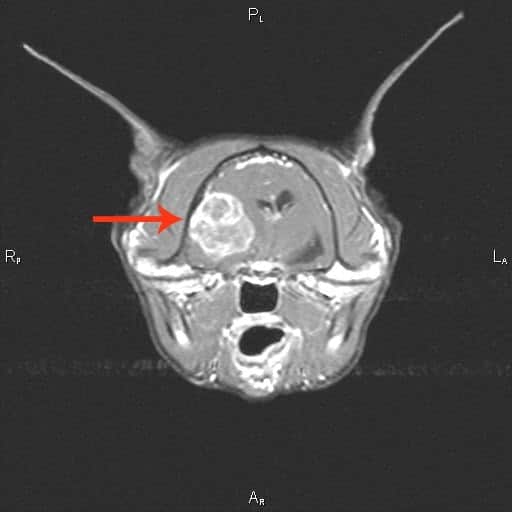Magnetic Resonance Imaging (MRI) is one of the most powerful and accurate diagnostic techniques in medicine today, and has become routine in human medicine. For the past ten years, MRI’s have been available for animals. An MRI provides detailed and valuable information without the higher risk involved in invasive procedures such as exploratory surgeries.
When Is MRI Useful?
MRI’s are considered in the following situations:
- Brain or spinal cord injuries or abnormalities
- Futher diagnostics after x-rays or ultrasound are normal, or unclear
- Lameness
- Abnormal nasal bleeding, swelling or discharge
- Chronic ear disease
- Some foreign bodies
The benefits on an MRI include:
- Superior visualization of disease in all areas of the body. Bone and soft tissue contrast is 8 times greater than x-rays or CT scans.
- Early detection
- Fast and accurate results
Procedure Facts
I visited the AnimalScan Advanced Veterinary Imaging center just outside of Washington, DC last week, and had a chance to speak with Medical Director Julie Smith, DVM. Of course, my focus was going to be on how MRI’s can benefit cats.
“Only seven to ten percent of our patients are cats,” said Dr. Smith. Sadly, cats are substantially underserved when it comes to veterinary care in general. Studies have shown that dogs are taken to the vet more than twice as often as cats, and Dr. Smith’s statistics certainly reflect that unfortunate trend. The majority of cat cases at the center are seen for neurological issues. Cats are also seen for problems with nasal passages, ears and abdomen.
I asked Dr. Smith to walk me through a typical patient visit. “The first thing we do is try to put the pet’s owner at ease,” she said. “I go out into the waiting room and bring the patient and the owners back into the main treatment area.” Cats are placed on an exam table padded with a bathrug and warm towel, and Smith performs a thorough physical exam while talking to the cat’s owners.
The actual MRI takes about an hour, and since the cat needs to hold completely still through the entire scan, anesthesia is required. Smith asks the owners to leave the treatment room while she and her staff place an intravenous cathether and induce anesthesia. The cat is then hooked up to monitoring equipment, including a heart monitor, blood pressure monitor, and pulse oximiter.
After the cat is positioned inside the magnet (the technical term for the actual MRI machine), Dr. Smith makes sure that all the monitoring devices are attached securely, and that they provide accurate readings. Due to the extrme noise of the magnet, neither she nor her staff can be in the actual room with the patient during the procedure. A dedicated licensed veterinary technician monitors anesthesia from right outside the room. If an animal presents a higher than normal anesthetic risk, a technician and/or Dr. Smith will don hearing protection and stay inside the room with the patient. If there is an anesthetic emergency, the procedure will be terminated early. “If there’s a problem, I will stop the scan immediately and tend to the patient’s needs,” says Smith.
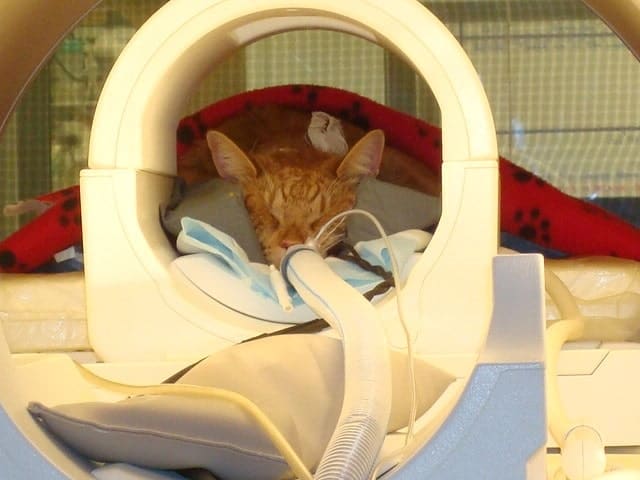
Once the patient is situated inside the magnet, Dr. Smith gives the owner the option to watch the scan through a glass wall. Depending on the size and position of the animal in the magnet, there may not be much to see other than the anesthesia tubes and a securely wrapped “lump” inside the magnet, but I like that they provide this option for pet owners. While it may be upsetting to see your cat hooked up to monitoring equipment and breathing tubes like the kitty in the photo above, it can also give pet parents the peace of mind of being able to be there with their pet, even if they can’t be in the actual room with them.
If referring veterinarians desire, they can watch the scan as it happens from their offices. The scan that was being performed while I was there was being watched by the referring neurologist in an office five miles away, but it could just as easily be watched halfway around the world. Referring veterinarians who don’t want to watch the scan “live” receive a complete report and a disk with the scan’s images. “Most referring specialists like to watch the scan as it’s being performed,” says Dr. Smith.
Once the scan is complete, the pet is moved to a recovery room, where the owner may join the pet until she is awake and coordinated enough to leave. Most pets recover quickly.
The MRI images below were taken of an 11 year old male neutered domestic long haired cat, showing a large brain tumor. “His presenting signs were a 5-month history of progressive behavior change and circling,” says Dr. Smith. ” This tumor was a meningioma and was surgically removed. One month after surgery he was back to his normal self!”
At $1500-1900, this is not an inexpensive procedure, but depending on a pet’s condition, it can save money in the long run by providing an accurate diagnosis without invasive surgery through a painless procedure with same day recovery.
Would you consider an MRI for your cat if it was indicated?
For more information about MRI’s and how they can benefit your pet, please visit AnimalScan Advanced Veterinary Imaging.
All images by AnimalScan and Dr. Smith, used with permission.
Featured Image Credit: PRESSLAB, Shutterstock

